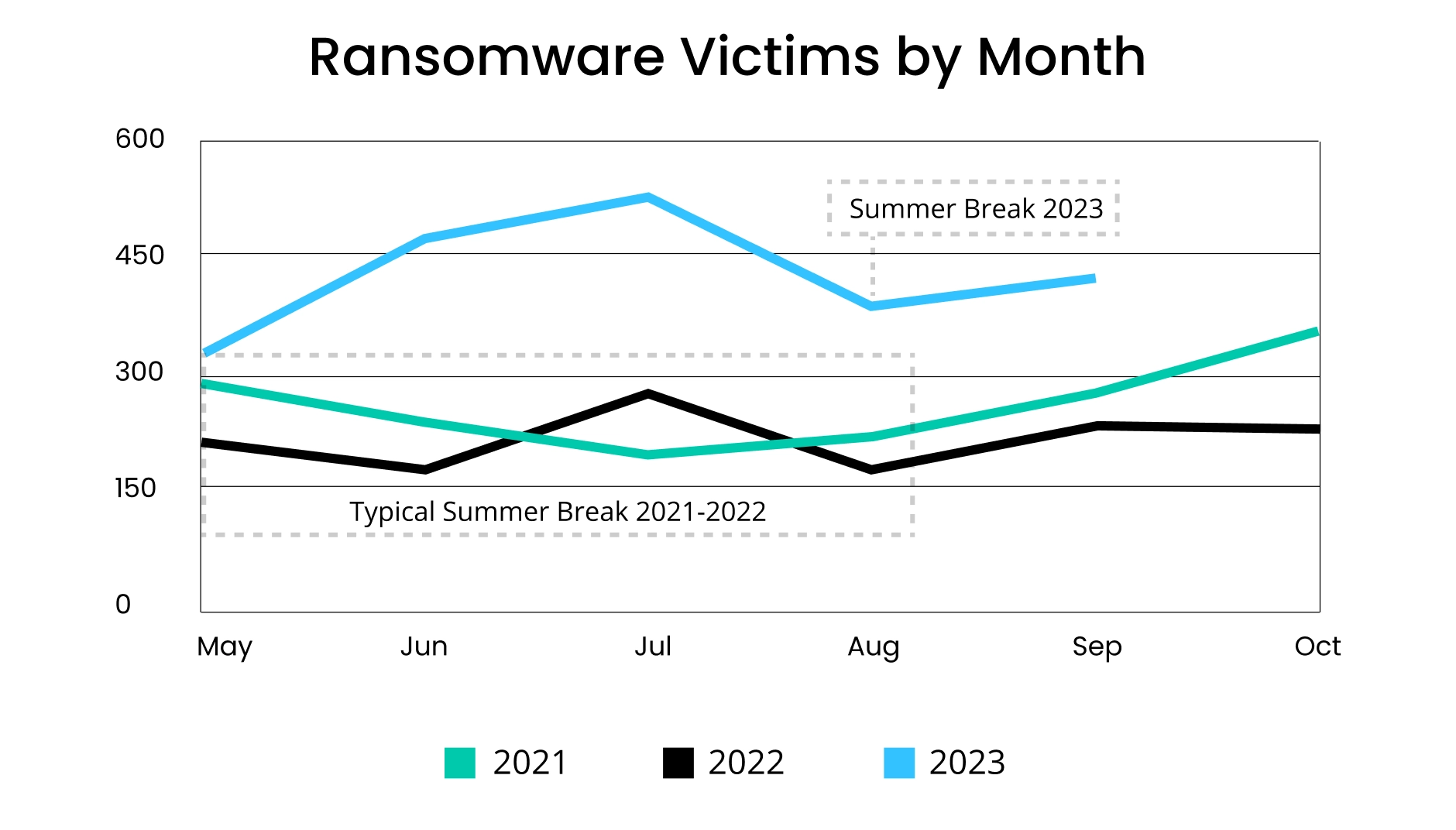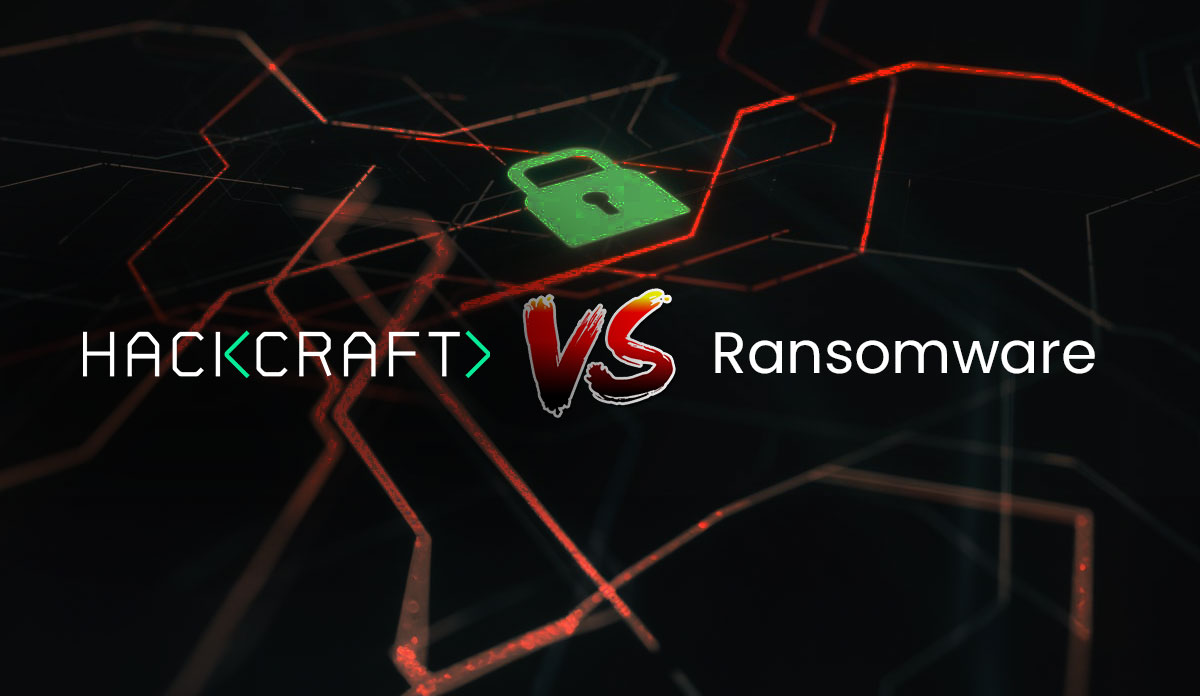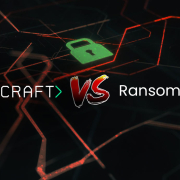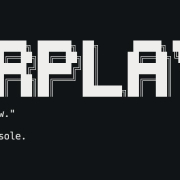Defending Against the Surge: Red Teaming in the Wake of Ransomware Attacks in Europe and Greece
As we bid farewell to 2023, let us highlight some enlightening insights. The research conducted by Corvus Insurance has shown a significant increase of over 95% in ransomware attacks compared to the previous year. According to Statista, over 72% of businesses worldwide were affected by ransomware attacks during 2023. Education, local and state government, healthcare, distribution and transport were among the top targets.
Moreover, Statista mentions that 36% of the organizations suffered ransomware attacks because of exploited vulnerabilities in 2023, with leisure and entertainment industry to be the most vulnerable to ransomware attacks. Credential compromise was the second-most common cause of successful ransomware attacks, while malicious e-mail ranked third. Consequently, 51% of organizations are planning to increase security investments as a result of a breach, including incident response planning and testing, employee training, threat detection and response tools, as IBM points out.

Source: Corvus Insurance
Significant Ransomware attacks in Headlines
The International Battleground
In recent years, we have witnessed a surge in ransomware attacks targeting organizations across all sectors. From disrupting critical infrastructure to paralyzing healthcare systems, these attacks have not only caused financial losses but have also shaken the foundations of trust in our digital systems and in several organizations.
To start with one of the most far-reaching cyber-attacks of the year, the file-transferring software MOVEit was victim to a ransomware attack starting in May 2023, unknown SQL injection vulnerability (CVE-2023-34362) in the MOVEit Transfer software which led to the attack affecting hundreds of billion-dollar companies including the BBC, Zellis, British Airways, Ofcom, Ernst and Young, Transport for London and more. In April, financial services firm, NCR, was hit by a ransomware attack that disrupted payment processing systems. Last but not least, in November China's biggest lender, ICBC, U.S. arm, was a ransomware victim.

Greece's Wake-Up Call
Beyond Europe, ransomware has cast its dark shadow across Greece. Major corporations, government agencies and even critical infrastructure have fallen prey to sophisticated attacks. The ripple effects have been felt not only in financial terms but also in terms of the broader implications for national security and public trust.
To mention some noteworthy ransomware attacks, Papaki.gr, the well-known Greek domain registrar, reported on July 27th that their systems had been accessed without authorization. While the details of the cyber-attack have not been disclosed, Papaki has informed that it is likely that two clients were affected by data leak. Moreover, Hellenic Public Properties Company (HPPC) experienced such an attack last November with limited impact on the organization's service operations as backups were properly configured and regularly updated. Also in November, the University of the Aegean had important documents published into the dark web after refusing to pay the ransom to attackers.
Hackcraft: A Proactive Αrtful Defense Strategy
In the face of this escalating threat landscape, organizations must adopt a proactive stance in defending against ransomware attacks. Neurosoft’s powerful service is Hackcraft, a Red Team highly capable of delivering exceptional Adversary Simulation services (Red Teaming). Red Teaming involves an adversary attack simulation of real-world threats (Advanced Persistent Threats) based on realistic scenarios that evaluate the overall security posture in order to test and measure the effectiveness and responsiveness of the people, processes and technology used to defend an organization digitally and physically.
Understanding Ransomware Simulation Exercises
To empower organizations towards this ransomware surge Hackcraft members have designed Ransomware Simulation Exercises. These exercises simulate real-life attack scenarios to test the organizations’ ransomware prevention and detection capabilities. Based on threat intelligence, these Exercises are tailored to meet the specific needs and objectives of each organization, providing a comprehensive and customized solution to the unique challenges faced by different business sectors.

Benefits of Hackcraft Ransomware Simulation
- Realistic Scenario Testing
Hackcraft Red Team creates tailor-made ransomware attacks based on real-life ransomware samples such as Cl0p and Lockbit. These ethical attacks help organizations better prepare and understand their team's response to the pressure of an actual ransomware attack. - Identifying Vulnerabilities
Hackcraft Ransomware Simulation allows organizations to evaluate the overall ransomware readiness, security posture and anti-ransomware controls. Identifying vulnerabilities and weaknesses in their current cybersecurity measures against ransomware threats helps in addressing potential gaps in security. - Testing Incident Response Plans
During a Ransomware Simulation, Hackcraft can help organizations assess the readiness of their incident response plans. This includes evaluating communication processes, decision-making, coordination among various teams, security controls, and in-place mechanisms, processes and policies. - Employee Training and Awareness
Hackcraft Ransomware Simulations offer a chance to train employees in identifying and responding to ransomware threats, raising awareness and improving overall security hygiene. - Meeting Compliance Requirements
In some industries conducting regular Red Team Exercises, including Ransomware Simulation Exercises, is a requirement for compliance. It helps organizations demonstrate their commitment to cybersecurity best practices. - Strategic Decision-Making
Insights gained from Hackcraft Ransomware Simulation debriefing enable informed strategic decision-making regarding cybersecurity investments and improvements. It supports a culture of continuous improvement, ensuring that defenses evolve to address emerging threats.
Hackcraft Ransomware Simulation vs Ransomware
The recent ransomware incidents that occurred in Greece and Europe should be a wake-up call for organizations to prioritize proactive cybersecurity measures. One such effective strategy is to adopt Ransomware Simulation, which allows organizations to foresee, detect and prevent potential threats before they escalate into crippling attacks. As we forge ahead, Hackcraft views Ransomware Simulation not merely as a security measure, but as a readiness evaluation against the known and the unknown of the ransomware threat landscape. It is a weapon of choice for safeguarding our digital future against the rising tide of ransomware.








